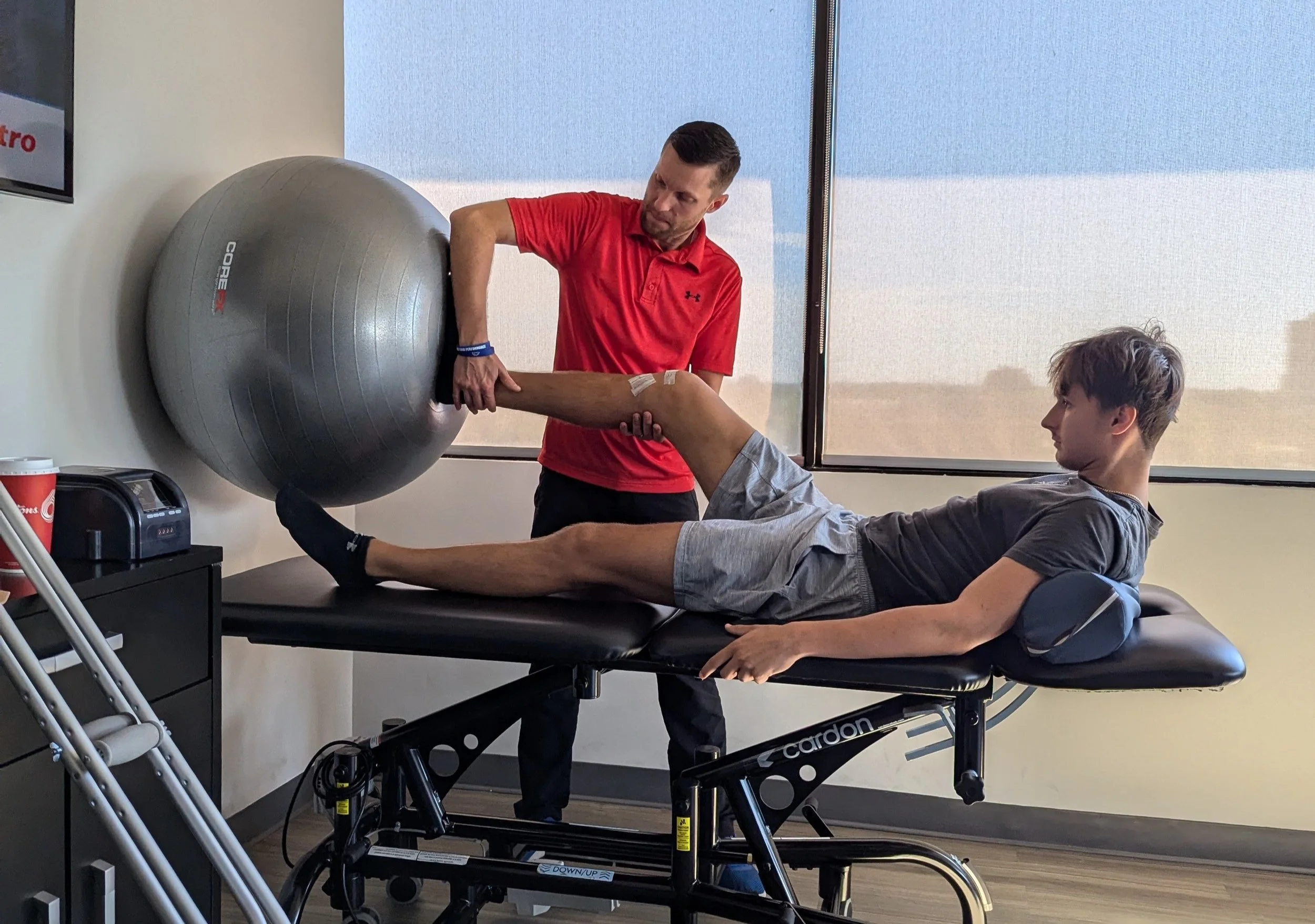Preventing Re-Injury: ACL Rehab Tips for Long-Term Knee Health
Finishing ACL rehab is a huge achievement, but the journey doesn’t end there. Many athletes and active individuals face the risk of re-injury within the first two years after surgery, especially if they return to sport or high-impact activities too quickly or without ongoing maintenance.
The good news? With the right strategies in place, you can significantly lower your risk and protect your knee for the long haul.
1. Keep Strength Training a Priority
Strength imbalances in the quads, hamstrings, and glutes are one of the biggest risk factors for ACL re-injury. Your rehab may have focused heavily on these areas, but ongoing training is essential.
Incorporate:
Single-leg strength work
Eccentric exercises
Hamstring-to-quadriceps strength balance
Plyometric progressions
Aim for 2 to 3 sessions per week, even after you're back to sport or regular activity.
2. Don’t Skip Neuromuscular Training
Good movement patterns matter. Many ACL injuries occur because of poor landing mechanics, knee valgus, or uncontrolled deceleration.
Include drills that focus on:
Jump and landing mechanics
Agility and directional changes
Core stability
Balance and proprioception
These exercises help train your brain and body to work together, especially under fatigue or pressure.
3. Prioritize Recovery and Load Management
Overtraining, fatigue, and inadequate recovery can set the stage for re-injury. Keep an eye on your training load, especially during busy sports seasons or when adding new exercises.
Key strategies:
Build in rest days
Monitor soreness and swelling
Adjust intensity based on how your body feels
Use tools like the Anti-Gravity treadmill to offload joints while maintaining cardio
4. Continue Working With Your Rehab Team
Just because formal rehab is over doesn’t mean your support system disappears. Schedule periodic check-ins with your physiotherapist, athletic therapist, or strength coach. They can:
Reassess strength and symmetry
Tweak your training plan
Spot early signs of overload or compensation
Preventing re-injury is easier when you’re proactive, not reactive.
5. Warm-Up with Purpose
A proper dynamic warm-up primes your muscles, joints, and nervous system. Focus on:
Activating key muscle groups (glutes, core, hamstrings)
Gradually increasing intensity
Practicing control during movements
Avoid jumping into games or workouts cold; your warm-up is your insurance policy.
6. Listen to Your Body, Not Just the Clock
Some athletes push too hard based on a timeline. Just because it's been 6 or 9 months since surgery doesn't automatically mean you're ready for high-level sport.
Pay attention to:
Swelling or pain after activity
Feeling unstable or hesitant
Fatigue or decreased performance
Respecting your body’s signals will help prevent setbacks.
7. Address the Mental Side of Recovery
Fear of re-injury, hesitation, or lack of confidence can affect your movement patterns and decision-making in sport.
Consider:
Working with a sports psychologist
Visualization techniques
Gradual exposure to game-like situations
Mental readiness is just as important as physical readiness when it comes to avoiding another injury.
Protect Your Progress With Long-Term Support
At Elevate in Oakville, we don’t just stop when you finish rehab. Our multi-disciplinary team can help you build a long-term plan to protect your knees and support your goals.
Whether you're training for performance or simply want to stay active without setbacks, we're here to keep you moving forward.
📍 710 Dorval Dr Unit 520, Oakville, ON
📞 (289) 835-2949
💻 https://www.elevaterehabilitation.com/


